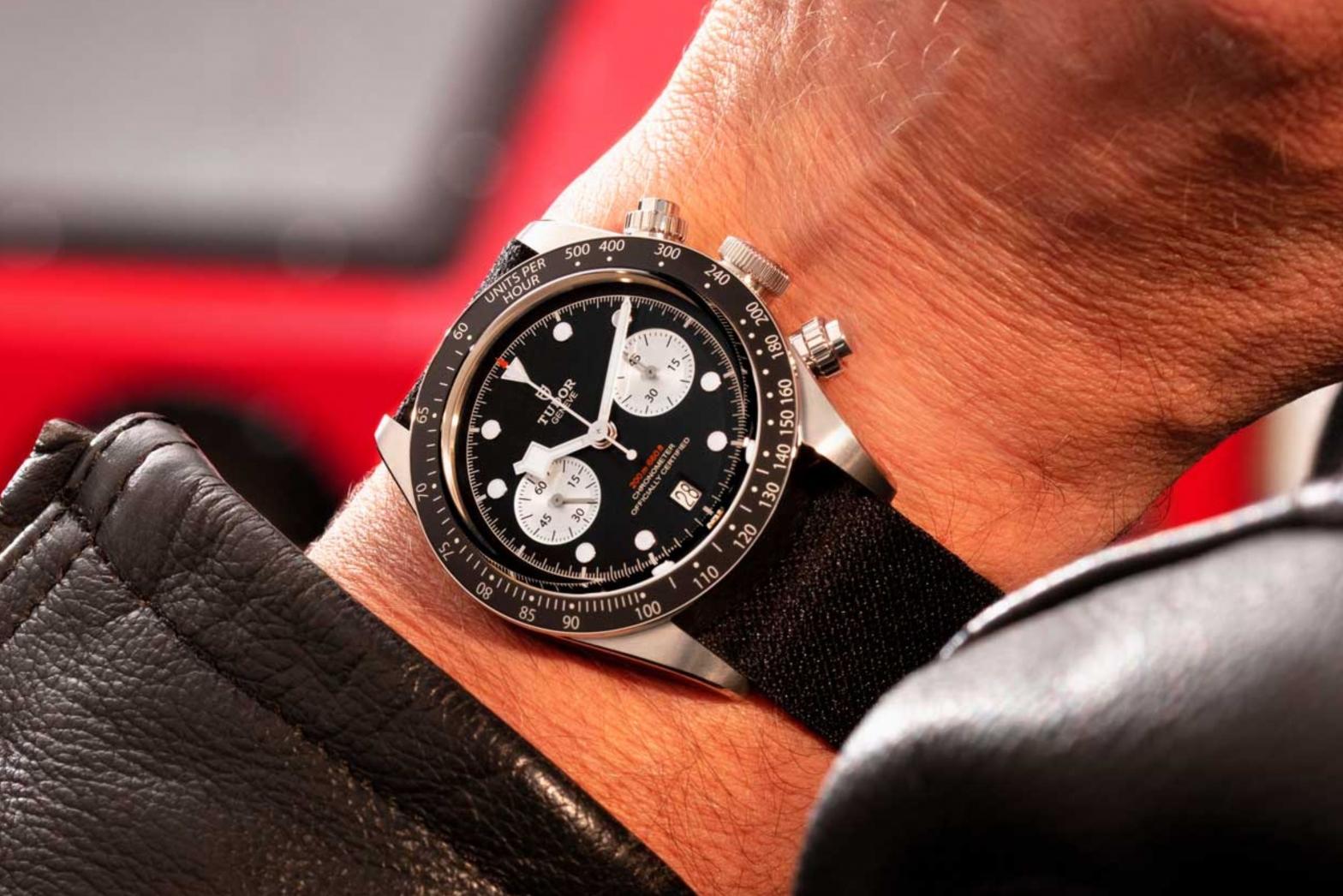
From the 1970s motor-racing inspired sports watches to the modern Black Bay Chronos, we look back at the fascinating history of Tudor’s most robust and reliable timepieces
In the world of collectible watches, as especially those from the House of Wilsdorf, there is arguably none more important than chronographs. The always-mighty Daytona is arguably its own microcosm of collecting, with scholars and collectors having dedicated their careers to understanding one of Rolex’s most intriguing models with seemingly myriad variations and iterations. Tudor, the younger brother, has its own extensive story to tell when it comes to chronographs with a few surprises and a plethora of style…
Home is Where the Heart Is
The very first Tudor chronographs were launched at the annual watch fair in Basel in 1970. Having never experimented with so-called ‘pump-pusher’ models like Rolex had in the early Pre-Daytonas and first series of Daytonas, the Tudors were housed in robust 40mm cases with screw-down pushers and large 7mm screw-down crowns like those used on dive watches. The Tudors had a date window at six o’clock on the dial, which was interestingly always a complaint about Daytona. The two different watches did have something in common though, in that both were fitted with manual wind modified Valjoux movements.
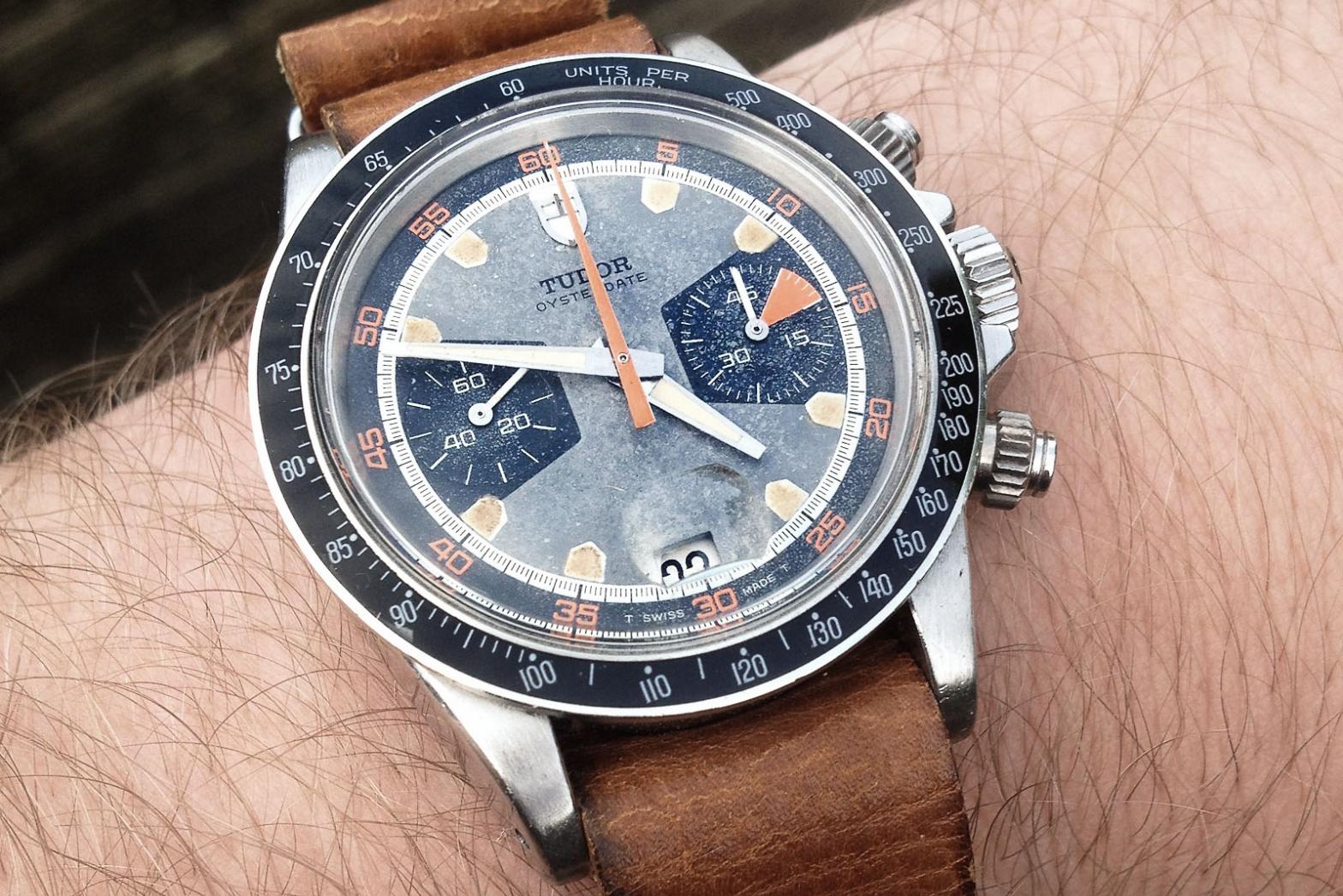
The first Tudors were available in two references, 7031 and 7032. The watches were essentially identical, the only difference being the bezel. The 7031 featured a black plastic tachymeter bezel and the 7032 featured an all stainless steel tachymeter. In today’s collector market both watches are considered rare, but the 7031 is harder to find in great condition as the plastic bezels were quite easily damaged. The most notable feature of these first series watches was the eye-catching color scheme. The predominant color was gray, with striking orange elements on the black subdials and outer track. The stopwatch hand was also bright orange. Collectors refer to these watches as Homeplates, which comes from the shape of the hour markers, which are like the home plate on a baseball field. There is also a very rare variant of these watches with black dials, where the black and gray elements are reversed. High-prized by collectors, I estimate that there are less than two-dozen known examples.
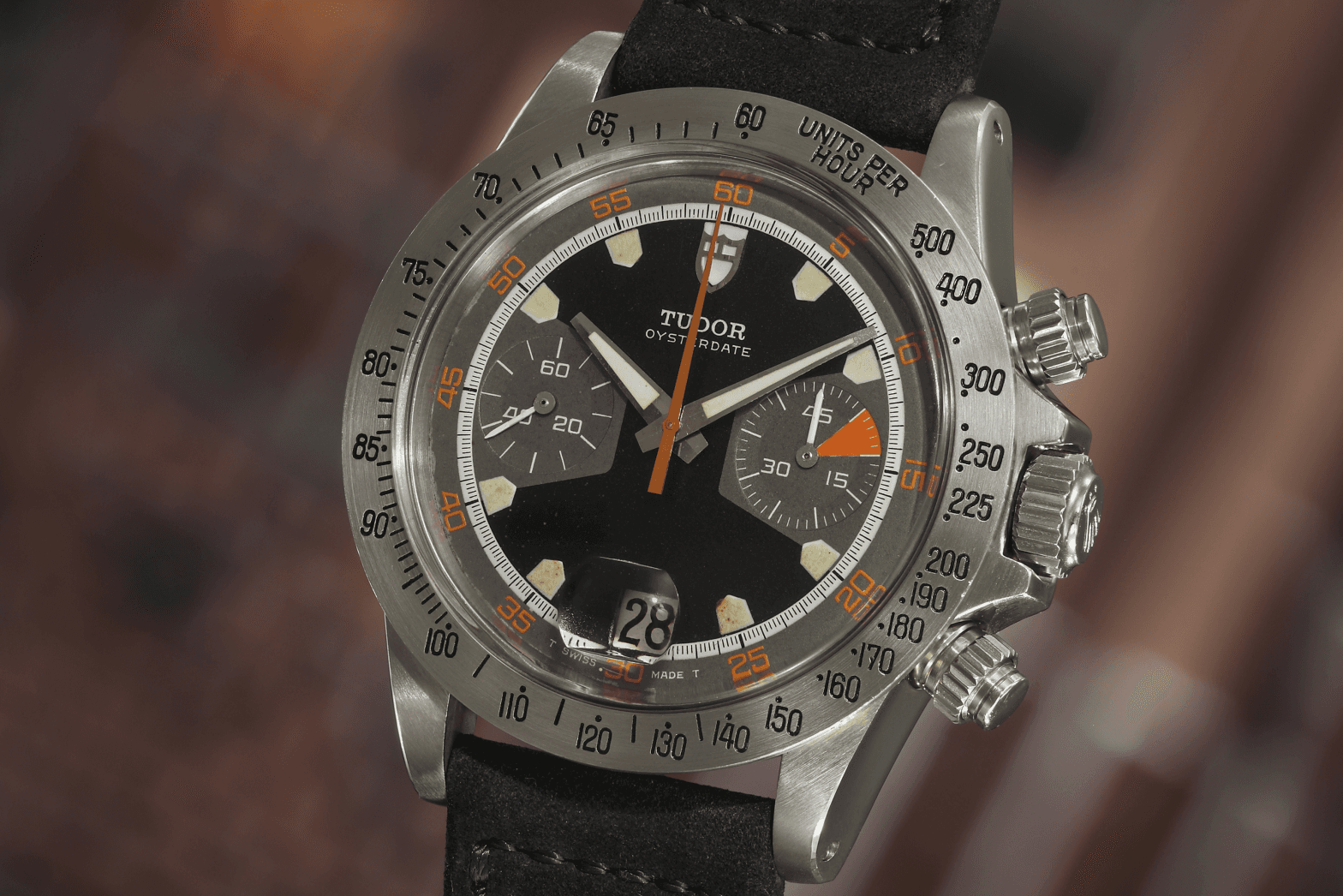

Monte Carlo or Bust
After only a year, in 1971 Tudor quickly launched the second series of chronographs. The cases of second series chronographs remained largely unchanged, with the large size 40mm diameter that offered a significantly bigger wrist presence than the 36mm Rolex Daytona. The eye-catching use of color continued with a gray and orange color scheme that was similar to the Homeplate and that was supplemented by a blue and orange combination that was new. The watches became known by collectors as Monte Carlos, as the dials, with interesting designs on the outer track and sub dials, looked similar to the roulette tables of Monte Carlo!
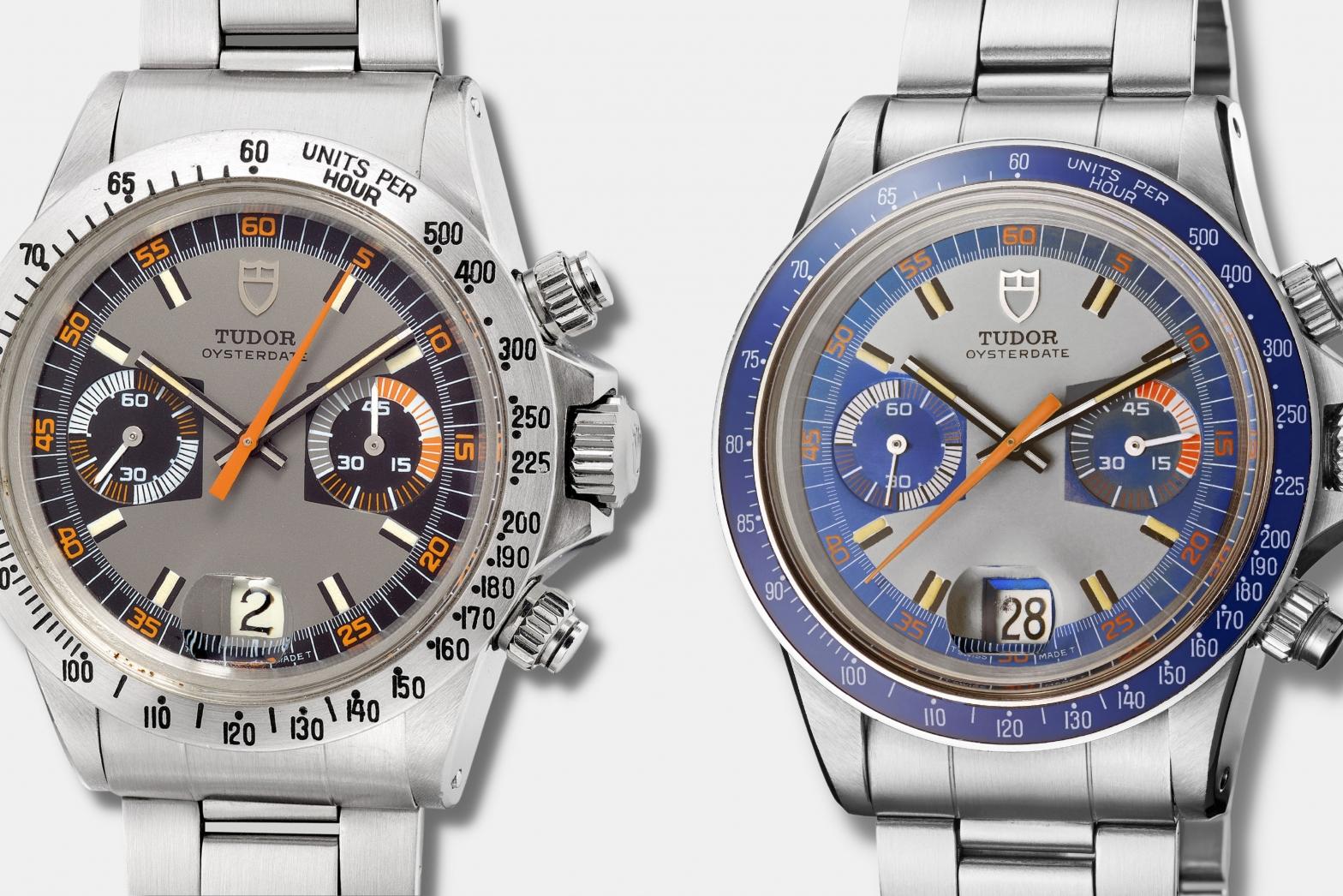
With the second series of chronographs, Tudor introduced a third bezel variation with a 12-hour bi-directional rotating bezel. The bezels were of similar construction to a Submariner, with steel bezel and anodized aluminum insert. The references were 7149, which had a fixed plastic tachymeter bezel, 7159 with a fixed steel tachymeter bezel and reference 7169 with the newly introduced 12-hour bezel for measuring elapsed time. The introduction of blue into the collection meant that there were both blue and black plastic tachymeter bezels for the 7149 and also both colors of 12-hour bezel inserts on the 7169.
New Kid on the (Big) Block
At the beginning I said that there were a couple of surprises in the Tudor chronograph story. The surprising use of color in the early series was arguably eclipsed in 1976 with the introduction of the third series of chronos. It was in this year that the House of Wilsdorf launched its first automatic chronograph. And it wasn’t a Rolex, it was a Tudor and it was over a decade before Rolex launched the automatic Daytona Perpetual in 1988. The case shape also changed for the first time with the third series too, as the autowind mechanism of the movement meant that Tudor needed to design a new case that was deeper, hence the collector term Big Block.
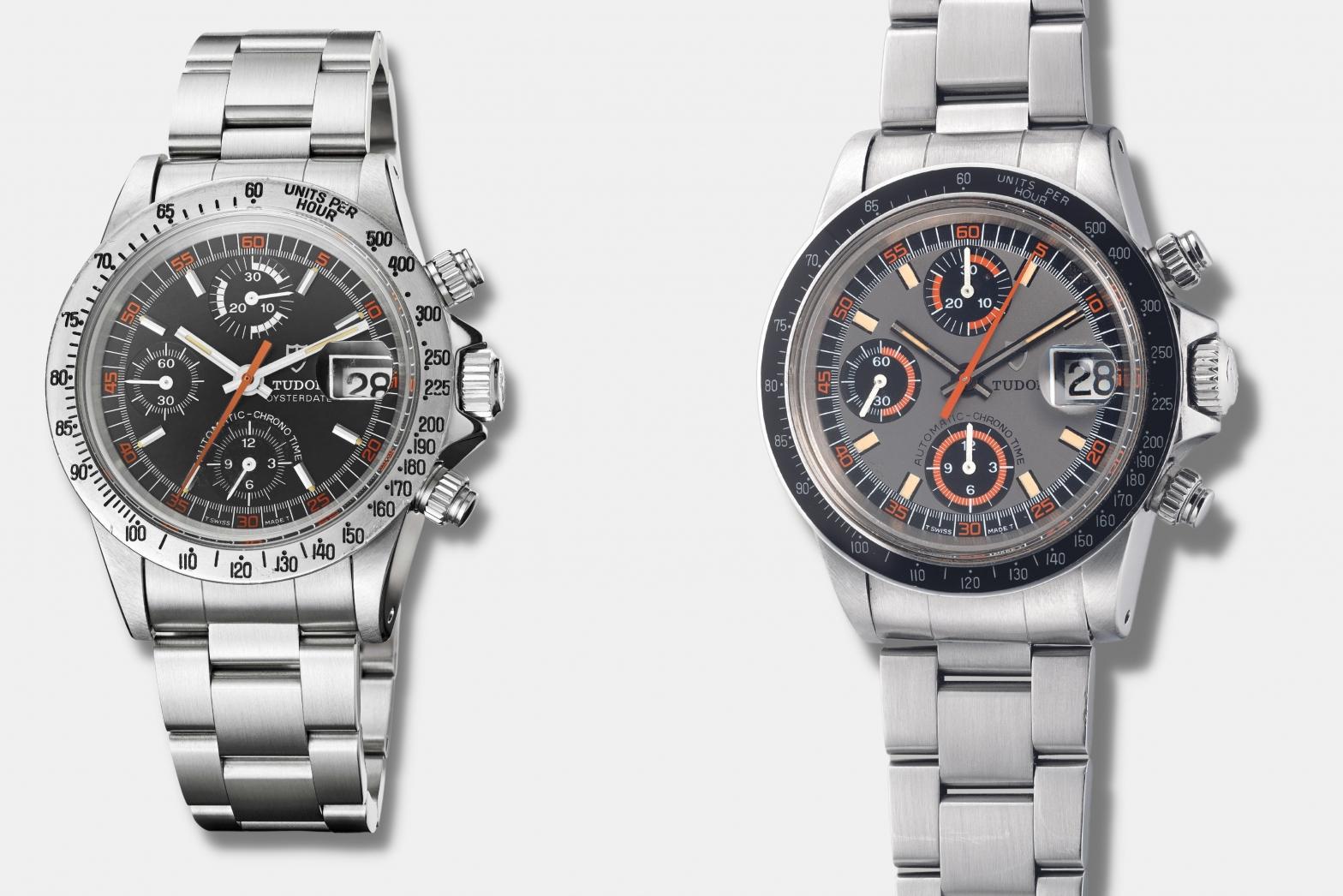
Bringing the watch closer in line with the tri-register Daytona, the Big Block introduced a third chronograph register on the dial. The first series watches were 45-minute chronographs, but now the watches had a new elapsed hours indicator that allowed the new watches to measure much longer periods of time. The first Big Block watches were the 9000 series with the references being differentiated by the bezel type. They consisted of 9420 with a plastic tachymeter bezel, 9421 with the 12 hour bezel and reference 9430 that was equipped with a steel tachymeter bezel. Tudor continued to produce exotic dials that picked up where the Monte Carlos had left off with the 9000 series. There were two variations of Big Block exotic dials, a version with painted hour markers and a version with applied metal hour markers. The dials with painted hour markers were available in two colourways, gray-black-orange and gray-blue-orange.
In the late 1980’s Tudor replaced the 9000 series watches with the 79100 series. These watches retained the Big Block case but were only available with the two color, non-exotic dial configuration. As with the 9000 series, there were three references which were all differentiated by their bezel type. The 79160 had a black plastic tachymeter bezel, the 79170 had a black 12-hour bi-directional bezel and the 79180 was fitted with a steel tachymeter bezel.
The Small Block
In 1995 Tudor launched the fourth series of chronographs, the Prince chronograph. By this time the Daytona Perpetual was well established and had become one of the most sought after watches on the market and had in fact created the first waiting-list for a watch. Maybe inspired by the success of the Daytona, the Prince Chronograph had a complete case redesign. Where previous Tudor chronographs had sharp edges and sporty flat case sides, a novel softer case form was introduced. This new aesthetic was further enhanced by the introduction of a sapphire crystal, which accentuated the lower profile of the watch on the wrist. Collectors now refer to these watches as Small Blocks, as they are so much sleeker than their predecessors.
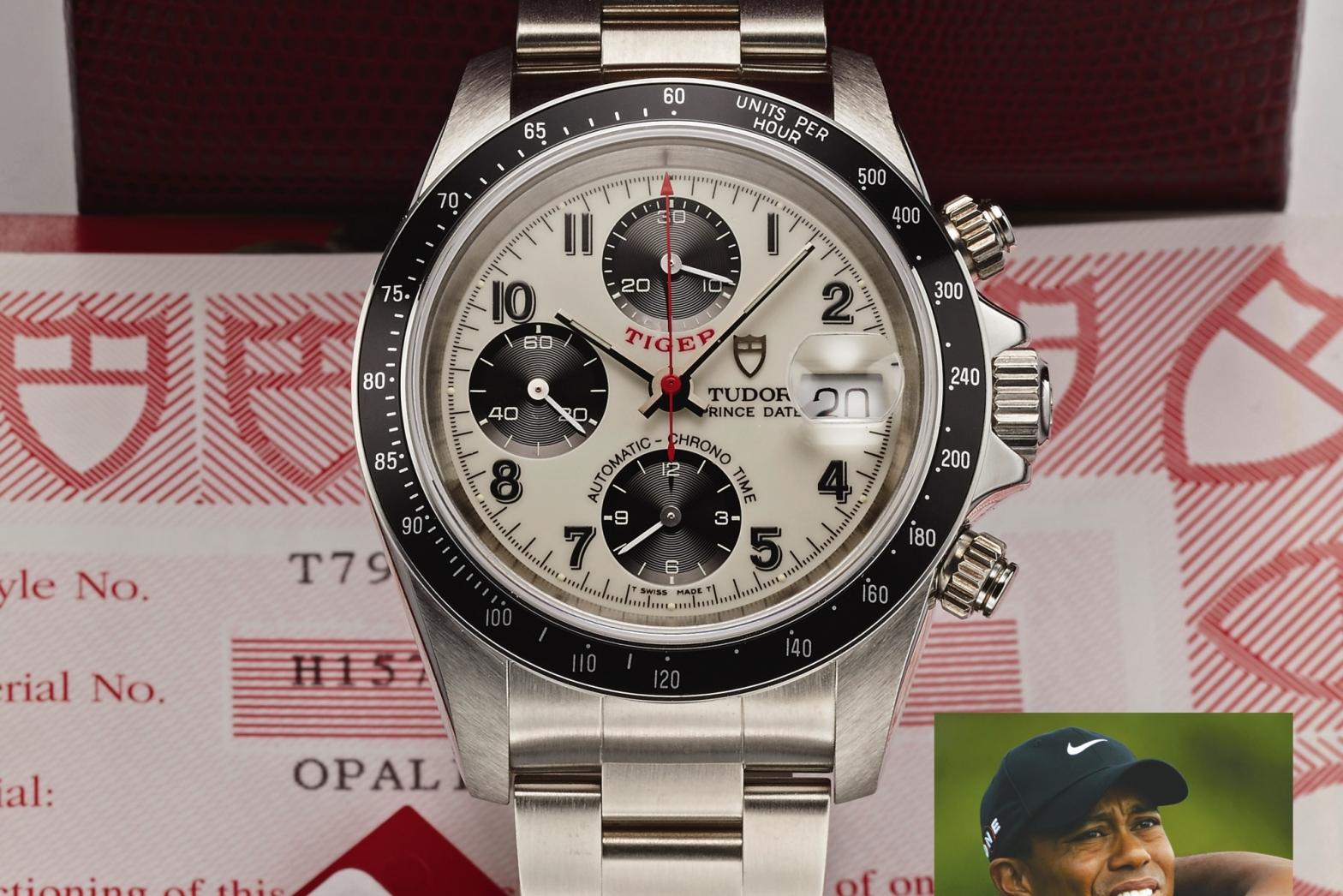
In the same manner as previously, the series comprised three references, each one referring to the bezel type. 79260 had a black aluminum fixed tachymeter bezel, 79270 a black aluminum rotating 12-hour bezel and 79280 had a steel fixed tachymeter bezel. The delicate plastic tachymeter of the previous series was replaced with an aluminum insert and the fixed steel tachymeter had a polished finish instead of the brushed matte version.
Up until the Small Block watches, Tudor had fitted the watches with Rolex winding crowns and Rolex-signed casebacks. During the first couple of transitional years, the use of Rolex branded winding crowns and case backs were phased out in favor of Tudor versions. Also the use of Osyterdate was phased out in favor of Prince Date. Another Daytona-influenced feature of the fourth series was the use of a leather strap and Tudor deployment buckle. The watches that were sold on leather straps were fitted with a short endlink to create a neat flush-fit between the case and strap. Where the gold Daytonas had fixed short endlinks, the Tudors fixed end links were removable which allowed the watches to be fitted with a bracelet, making it more versatile.
Heritage Heroes and Beyond
One of the most incredible watch brand relaunches of recent times, was the Tudor Heritage line in 2010. Having been withdrawn form the UK and USA markets in the early 2000s, the brand was reinvigorated and reimagined in 2010 with the Heritage Chrono. The was a modern interpretation of the first series of Homeplate chronos that took the collecting community by surprise. It was the talk of the town at Baselworld that year and enabled enthusiasts to own a modern version of what had become one of the most collectible Tudors. In 2013 Tudor followed up with a second Heritage Chrono in blue. The second version was very heavily based on the reference 7169 Monte Carlo but kept with the new formula of a 42mm case with sapphire crystal and this time a blue 12-hour rotating bezel.
.gif&w=4320&q=75)
Launched in 2012, as part of the revived Heritage line, the Black Bay has now become the cornerstone of the modern era of Tudor. As one might expect, one of the most successful iterations of the family is the Black Bay Chrono. Initially launched in an all steel version with all black dial and fixed steel tachymeter bezel, the Chrono is now available in two-tone versions known as S&G (for steel and gold) and more recently as reference 79360 – a steel watch with black fixed tachymeter bezel. The new BB Chrono has both Panda (white dial with black subdials) and Reverse Panda dial types and has its own waiting list. Step aside Daytona!
